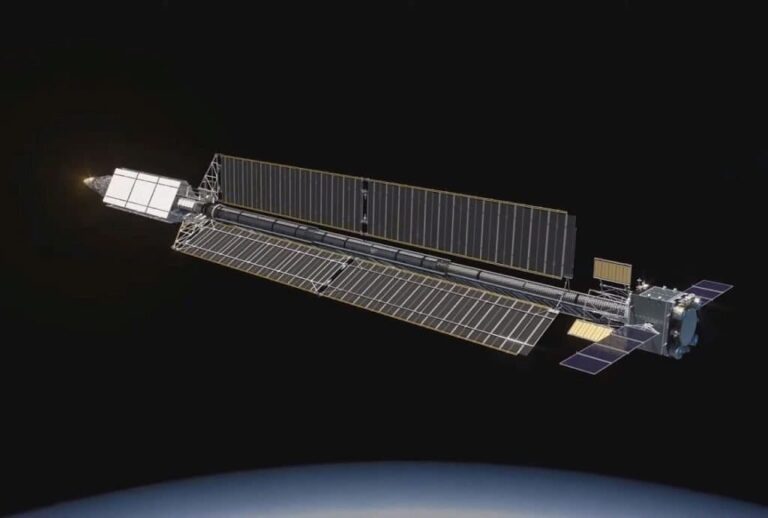OPEN LETTER TO ELON MUSK
Dear Elon,
I have been following the world of astronautics with extreme interest for more than 30 years, that is, since the first images of the Artemis program began to appear on the Net (the Internet was in its infancy and only Arpanet and BBSs existed), the goal of which was and still is, the return of human beings to the Moon and the establishment of a permanent scientific base.
Over the years I have longed for Mankind to develop a “space mentality” to become a “multiplanetary” race, a term you hold dear.
Unfortunately, however, until a decade ago, this wish of mine could only remain so due mainly to questionable technological choices and scientific/cultural goals that were far from necessary.
Then, almost out of nowhere, you came along and wreaked havoc on the Western industrial world, and rekindled hopes, mine and those of millions of other like-minded enthusiasts in the field.
Within a few years you created SpaceX from scratch and brought it to success with the Falcon 9 reusable rocket. You have enabled the U.S. to travel back to the ISS with its own shuttle, Dragon, and now you are developing the Starship, thank to which you propose to realize the dream of many people, thas is, to set foot on Mars as early as the next decade.
You have also anticipated many details regarding the certainly futuristic and ever-evolving project of making not just a Martian outpost as many would expect, but even a full-fledged colony with millions of permanent residents on the Red Planet. And to achieve that, you are rightly banking everything on the Starship.
You even stated that in order to be able to realize such a project, it will be necessary to have thousands of Starships to be sent to Mars over a period of 20 years so that it will be possible to transfer to the Red Planet all the technological materials needed to realize this project.
Despite the pace to which you and SpaceX have accustomed us, I have a feeling that the pace needed to achieve that goal, 10,000 Starships in 20 years, is not feasible, even multiplying your company’s production capabilities by 10.
This, however, does not mean that the project of colonizing Mars is not feasible, it is simply not with Starships that you will be able to succeed in this futuristic endeavor.
No, Elon, I’ll tell you very frankly: to colonize Mars you don’t need thousands of Starships, you only need a dozen well-made and 100 percent functional ones. What you need, what the human race needs, in order to develop a “space mentality” and thus become a “multiplanetary” race, is a real interplanetary Starship (hereafter just “Starship”), which will do only and exclusively what a Starship is designed and built to do, i.e., allow the transportation of things and people between the orbits of planets.
You see Elon, the Starship has theoretical (but I have no doubt that it will soon become practical) capabilities to take off from and land on planets with an atmosphere and gravity like that of planet Earth. At the same time, once refueled in orbit with the necessary fuel, it would also have the capacity to cover a distance like the one between the planet Mars and Earth, with 100 people and a 100-ton load on board. Fine, but a Starship, with these characteristics, is to be understood and thus used, as a SHIP, that is, to transfer things and people from the surface of a planet to its orbit and vice versa, where a spaceship is waiting, or for orbit-to-orbit transfers over small to medium distances.
You can use the Starship to get to lunar orbit, but to think of using it frequently to reach the surface of Mars, is a bit of a risky choice in my view. Of course, no one forbids you from using a shuttle on very long routes (currently Earth-Mars is the longest imaginable with a human crew), but such a trip would be extremely expensive, inconvenient and slow, as well as dangerous. It is a bit like having to ship thousands of tons of goods from Rome to Beijing and deciding to use a fleet of hundreds of trucks. You can do that, of course, but it would be much cheaper, faster and safer to load the cargo onto a large container ship and ship it to its destination. Don’t you agree?
When the exploration of Mars will officially begin, Starship shuttles will presumably be used, as the highest performing shuttles available to us. They will have the best ratio of cost to transportable payload capacity. From what I have read, the concept of SpaceX is to make a few overflights of the Red Planet, in order to verify the structural and control capabilities of the Starships, and then proceed to the landing of the first shuttles with everything necessary on board to establish a first permanent outpost on the Red Planet, and thus start the production of methane and oxygen straight there. I can imagine that the first Starships landing on Mars will stay there “forever,” since it will be impossible to refuel them immediately. And just that, in my humble opinion, presents huge critical issues that could jeopardize the future of the program and the colonization of the Red Planet. But let’s proceed with order.
The Earth-Mars voyage, according to what you stated, is expected to last between 150 and 180 days, which for such a risky trip is a lot … especially if there is no absolute certainty that everything can go right. Of course, those who will participate in such an event will be aware of the risks they are taking, and above all certain that any sacrifice they make will only help in subsequent missions. Making the approach to planet Mars even more difficult, even for just a couple of unmanned orbital overflights, is the fact that there is no “support structure” near the planet. Imagine what a malfunction at the Mars-bound Starship would mean for SpaceX’s entire astronaut program (and beyond). Surely, at best, there would be a stop for a few years and a complete overhaul of the program. But if it were a manned mission to fail, well…I dare not imagine the public reaction…and investors! It would mean a halt of at least 10 years of the entire program, with the consistent risk of seeing your and our dreams wrecked.
So, Elon, what should be done is to think with a “space mentality”, something I see absent in many visionaries like you, too busy, I’m afraid, with achieving their goals at any cost.
Thinking with a “space mentality” means imagining any future scenario, be it a danger or an opportunity, and adapting projects in a way that allows the maximum “gain” with the minimum risk for the projects and for those who are part of them, astronauts first and foremost.
I’m convinced that changing some choices now, would lead:
- in the short-to-medium term to reduce costs and travel time to Mars, significantly increasing the amount of transportable payload, and providing significantly greater safety for the entire crew;
- in the medium to long term to reduce the time required to complete the entire project (Mars colony), opening up new business opportunities for both SpaceX and all of astronautics.
In concrete terms, what I am suggesting is to first think about each individual project in such a way as to make it “modular,” that is, to structure it in such a way that the various parts can be replaced as they age or upgraded with new technologies that can ensure that the various functionalities are improved. This would greatly lengthen the life of the entire project, whatever it is, and promote a more immediate economic return, as well as safeguard the success of the space program. It means, in other words, focusing on modularity, cost-effectiveness, functionality and safety. This is, in my view, the cornerstone of a space mentality.
As mentioned earlier, what will be needed in the near future to colonize Mars (and beyond) is a real Spaceship. In modern science fiction culture, unlike shuttles that can land on planets, Spaceships do not have such a capability, even if there were a reduced gravity like that of the Moon.
They do, however, have a much greater carrying capacity and range. And that is exactly what we need now.
What SpaceX should be equipped with, for the Mars colonization program is, therefore, a spacecraft capable of interplanetary travel, in order to limit the potential dangers deriving from possible malfunctions, and at the same time to have a supporting base in Martian orbit in which to find shelter in case of need.
Let’s forget for a while the curvy, aerodynamic lines of the Starship and concentrate on what I mean by Starship, since in space aerodynamic lines serve no purpose other than aesthetics, at least until space steelmaking secures a cheap supply of metal panelling to be used as a protective anti-micrometeorite coating.
The spacecraft I imagine would consist of parts made on the ground and assembled in orbit. A power generation module, a truss structure where payloads can be attached to, a service module and a propulsion module. Nothing else.
At first, electricity could be produced with simple and functional photovoltaic panels (although near planet Mars, photovoltaic power production would be very limited), to be supplemented or replaced in the future by nuclear reactors when they will be available for use in space. For the propulsion system,the most efficient and functional one is currently the chemical one with methane and oxygen. But in the future there could be electromagnetic thrusters which, in the face of high energy consumption and and a, currently,still limited thrust, would allow travel with uniformly accelerated motion, which would drastically reduce the duration of any space travel. The service module would provide all the functions of a spacecraft, such as attitude control, navigation, long-distance data transmission and life support.
On either side of the load-bearing truss, the length of which could be chosen without any particular structural limitations during assembly, would be the fuel tanks and the cargo, both of which would consist of actual space-containters whose dimensions, in the case of SpaceX, would be those of the Starship payload fairing.
The entire Starship could be considered as a kind of space “container ship,” with automatic or remote control of navigation, and the ability to make journeys in total autonomy, with any destination.
The “modular” structural feature, would allow such a Spaceship to receive technological improvements as they become available, without having to redisign everything from scratch. In addition, it would ensure a huge reduction in travel costs between Earth and Mars, to the benefit of the project and the investors.
Given the characteristics and the size (I imagine no less than 200-300 meters in length), such a Starship would have to be assembled in medium Earth orbit, either at one of the Lagrange points of the Earth-Moon system or in lunar orbit. In both cases, at a point reachable from Earth where our Planet has no, or little gravity.
Once the Starship is assembled, the Starships would carry the 100-150 ton payload to low Earth orbit. From there, each individual “space container” would be transferred to the Starship using an automated “tug” (i.e., an automated vehicle equipped with a thruster and attitude control, capable of transferring external payloads between different orbits).
Once the cargo is completed, the Spaceship would depart for Mars on a low-energy orbit in the case of cargo only, while opting for an orbit with reduced travel time in case there is a crew on board (in order to limit exposure to cosmic and solar rays as much as possible).
Once the Spaceship reaches Martian orbit, it will be able to function as a temporary “spaceport” so that it can provide a safe landing for any vehicle arriving from planet Earth, Mars or, in the future, the Asteroid Belt.
The central structure of the Spaceship would form the heart of the entire vehicle complex. A structure composed of several modules arranged with special docking systems, some designed for docking tanker-type “container-spaceships,” others used only as cargo. Othe modules can be arranged with special air-looks and a central connecting tunnel to allow transit from one hatch to the other in a pressurized environment in case “container-spaceships” set up as living modules (the Starship Crew part). Even whole Starships or Dragons could be docked there.
Regular voyages of Starships such as these would make it possible to transfer huge quantities of materials and structures into Martian orbit, as well as to have them immediately available for the assembly of an outpost on the Red Planet. With the Starships on board, then, the various “space containers” would be gradually transferred to the surface and to the chosen location for the construction of the outpost.
I envision a future, not very distant, in which a fleet of these Starships would periodically shuttle between Earth and Mars, some reaching as far as the Asteroid Belt, where a campaign of mining studies could be carried out. Others could be positioned in a permanent orbit around our planet, acting as automated science platforms with the possible occasional presence of scientists and technicians on board.
Having large Spaceships, assembled with standardized components and whose cargo capacities could vary according to mission needs, would radically lower transportation and operational costs, thus accelerating the colonization of space and consistently fostering the development of a “space mentality.”
Traduzione curata da Paul C.F.
Caro Elon,
seguo con estremo interesse tutto il mondo dell’astronautica da oltre 30 anni, ovvero da quando iniziarono ad apparire in rete (internet era agli albori ed esistevano solo Arpanet e le BBS) le prime immagini del programma Artemis, il cui obiettivo era ed è tutt’ora, il ritorno dell’essere umano sulla Luna e la realizzazione di una base scientifica permanente.
Nel corso degli anni ho desiderato ardentemente che l’Umanità sviluppasse una “cultura spaziale” per diventare una razza “multiplanetaria”, termine a te molto caro.
Purtroppo, però, fino a un decennio fa, questo mio desiderio non poteva che rimanere tale a causa principalmente di scelte tecnologiche opinabili e obiettivi scientifico/culturali tutt’altro che necessari.
Poi, quasi dal nulla, sei arrivato tu a gettare scompiglio nel mondo industriale occidentale, ed hai riacceso le speranze, mie e di altri milioni di appassionati come me del settore.
Nel giro di pochi anni hai creato da zero la SpaceX e l’hai portata al successo con il razzo riutilizzabile Falcon9. Hai permesso agli USA di poter tornare a viaggiare verso la ISS con una propria navetta, la Dragon, ed ora stai sviluppando la Starship, con la quale ti proponi di realizzare il sogno di molti di poter mettere piede su Marte già nel prossimo decennio.
Hai anche anticipato molti dettagli riguardanti il progetto, sicuramente avveniristico ed in continua evoluzione, di realizzare non un semplice avamposto marziano come molti si aspetterebbero, ma addirittura una vera e propria colonia con milioni di abitanti stabilmente residenti sul pianeta rosso. E per realizzarlo, giustamente, punti tutto sulla Starship.
Addirittura hai affermato che per poter realizzare un tale progetto, sarà necessario disporre di migliaia di Starship da inviare su Marte nell’arco di 20 anni in modo tale che sia possibile trasferire sul pianeta rosso tutto il materiale tecnologico di cui si avrà bisogno per realizzare questo tuo progetto.
Nonostante i ritmi ai quali tu e la SpaceX ci state abituando, però, ho la sensazione che il ritmo necessario per raggiungere quell’obiettivo, 10.000 Starship in 20 anni, non sia fattibile, neanche moltiplicando per 10 le capacità produttive della tua azienda.
Questo, però, non significa che il progetto di colonizzare Marte non sia fattibile, semplicemente non è con le Starship che potrai riuscire nella tua futuristica impresa.
No, Elon, te lo dico molto sinceramente: per colonizzare Marte non hai bisogno di migliaia di Starship, te ne bastano una dozzina ben fatte e funzionanti al 100%. Quello di cui hai bisogno, di cui ha bisogno la razza umana per sviluppare una “cultura spaziale” e diventare quindi una razza “multiplanetaria”, è una vera e propria Astronave interplanetaria (di seguito solo “astronave”), che faccia solo ed esclusivamente ciò per la quale un’astronave viene progettata e realizzata, ovvero permettere il trasporto di cose e persone tra le orbite dei pianeti.
Vedi Elon, la Starship ha capacità teoriche (ma non ho dubbi che diventeranno presto anche pratiche) di decollare e atterrare da e su pianeti dotati di atmosfera e con una gravità come quella del nostro pianeta Terra. Contemporaneamente, una volta rifornita in orbita del carburante necessario, avrebbe anche la capacità di coprire una distanza come quella che separa il pianeta Marte dalla Terra, con a bordo 100 persone ed un carico di 100 tonnellate. Tutto bello, per carità, ma la Starship, con queste caratteristiche, va intesa e quindi utilizzata, come una NAVETTA, ovvero per trasferire cose e persone dalla superficie di un pianeta all’orbita dello stesso e viceversa, dove c’è in attesa un’astronave, oppure per trasferimenti orbita-orbita su distanze medio-piccole. La Starship la puoi giustamente utilizzare per arrivare in orbita lunare, ma pensare di utilizzarla frequentemente per raggiungere la superficie di Marte, la vedo un po azzardata come scelta. Ovviamente nessuno ti vieta di usare una navetta su percorsi molto lunghi (al momento Terra-Marte è il più lungo che si possa immaginare con un equipaggio umano), ma un tale viaggio risulterebbe estremamente costoso, scomodo e lento, oltre che pericoloso. È un po come dover spedire migliaia di tonnellate di merci da Roma a Pechino e decidere di utilizzare una flotta di centinaia camion. Puoi farlo… certo, nessuno te lo vieta, ma sarebbe molto più economico, veloce e sicuro, imbarcare il carico su una grossa nave portacontainer e spedirla a destinazione. Concordi?
Quando arriverà il giorno in cui inizierà ufficialmente l’esplorazione di Marte, verranno presumibilmente utilizzate delle navette Starship, essendo queste le più performanti a nostra disposizione e con il miglior rapporto tra costi e capacità di carico utile trasportabile. Da ciò che ho letto, l’idea della SpaceX è quella di effettuare alcuni sorvoli del pianeta rosso, al fine di verificare le capacità strutturali e di controllo delle Starship, per poi procedere all’atterraggio delle prime navette con a bordo tutto il necessario per stabilire un primo avamposto stabile sul pianeta rosso, ed avviare così la produzione di Metano e Ossigeno direttamente in loco. Posso immaginare che le prime Starship che atterreranno su Marte resteranno lì per “sempre”, dato che sarà impossibile rifornirle subito di carburante. E già qui, secondo il mio modesto parere, ci sono alcune enormi criticità che potrebbero compromettere il futuro del programma e della colonizzazione del pianeta rosso. Ma andiamo con calma e in ordine.
Il viaggio Terra-Marte, stando a ciò che hai affermato, dovrebbe durare tra i 150 e i 180 giorni, che per un viaggio così rischioso sono tanti… specialmente se non si ha la certezza assoluta che tutto possa andare per il meglio. Certo, chi parteciperà a tale evento lo farà cosciente dei rischi che correrà e soprattutto certo che un eventuale suo sacrificio, non potrà che essere d’aiuto per le successive missioni. A rendere ancora più difficoltoso l’approccio al pianeta Marte, anche solo per un paio di sorvoli orbitali senza equipaggio, c’è il fatto che non si ha nessuna “struttura di appoggio” nei pressi di tale pianeta. Immagina cosa significherebbe, per l’intero programma astronautico della SpaceX (e non solo), un malfunzionamento alla Starship diretta verso Marte. Di sicuro, nella migliore delle ipotesi, si avrebbe uno stop di qualche anno ed una revisione completa dei progetti. Ma se a fallire fosse addirittura una missione con equipaggio umano, beh… non oso immaginare la reazione dell’opinione pubblica… e degli investitori! Significherebbe uno stop di almeno 10 anni dell’intero programma, con il concreto rischio di vedere naufragati i tuoi e i nostri sogni.
Quindi, Elon, quello che bisognerebbe fare è pensare già con una “cultura spaziale”, cosa che vedo assente in molti visionari come te, troppo presi, temo, a raggiungere ad ogni costo gli obiettivi che si sono prefissati.
Pensare con una “cultura spaziale” significa immaginare qualsiasi scenario futuro, che si tratti di un pericolo o un’opportunità, e adeguare i progetti in modo da trarre dalla loro realizzazione, il massimo “guadagno” con il minimo rischio per i progetti e per chi ne fa parte, astronauti in primis.
Credimi se ti dico che cambiare ora alcune scelte, porterebbe:
- nel breve-medio termine a ridurre costi e tempi di percorrenza verso Marte, aumentando sensibilmente la quantità di carico utile trasportabile, e garantendo una sicurezza nettamente maggiore a tutto l’equipaggio;
- nel medio-lungo termine a ridurre i tempi di realizzazione dell’intero progetto (colonia marziana), aprendo nuove opportunità di business sia per la SpaceX che per tutta l’astronautica.
Nel concreto, quello che suggerisco è pensare prima di tutto ogni singolo progetto in modo da renderlo “modulare”, ovvero strutturarlo in modo da poter sostituire i vari pezzi man mano che invecchiano o aggiornarli con nuove tecnologie che possano garantire un miglioramento delle varie funzionalità. Questo allungherebbe molto la vita dell’intero progetto, qualunque esso sia, e favorirebbe un ritorno economico più immediato, oltre a salvaguardare la riuscita del programma spaziale. Significa, in altri termini, puntare su modularità, economicità, funzionalità e sicurezza. Queste sono, a mio avviso, le basi fondanti della cultura spaziale.
Come accennato in precedenza, quello di cui si avrà bisogno nel prossimo futuro per colonizzare Marte (e non solo), è una vera e propria Astronave. Nella cultura fantascientifica moderna, a differenza delle navette che possono atterrare sui pianeti, le Astronavi non hanno tale capacità, neanche se ci fosse una gravità ridotta come quella della Luna. Hanno però una capacità di carico ed un’autonomia molto maggiori. Ed è esattamente quello di cui abbiamo bisogno ora.
Quello di cui dovrebbe dotarsi la SpaceX per il programma di colonizzazione di Marte è, quindi, un’astronave con la quale effettuare i viaggi interplanetari, così da limitare i potenziali pericoli dovuti ad eventuali malfunzionamenti, ed avere al contempo una “base di appoggio” in orbita marziana nella quale rifugiarsi in caso di necessità.
Dimentichiamoci per qualche tempo le linee sinuose e aerodinamiche della Starship per quel che intendo io per Astronave, perché nello spazio non servono a nulla se non all’estetica, almeno finché la siderurgia spaziale non garantirà una fornitura a buon mercato di pannellature metalliche da usare come rivestimento protettivo anti-micrometeoriti.
Tale astronave la immagino formata da parti realizzate a terra e assemblate in orbita. Un modulo per la generazione di energia elettrica, una struttura a traliccio sul quale agganciare i payloads, un modulo di servizio ed un modulo propulsivo. Nient’altro.
All’inizio si potrà produrre energia elettrica con dei semplici e funzionali pannelli fotovoltaici (anche se nei pressi del pianeta Marte la produzione di energia da fotovoltaico risulterebbe oltremodo limitata), da integrare o sostituire in futuro quando si avrà la possibilità di utilizzare reattori nucleari anche nello spazio. Per il sistema propulsivo, al momento il più efficiente e funzionale è quello chimico con Metano e Ossigeno, ma in futuro si potranno avere anche propulsori elettromagnetici i quali, a fronte di un elevato consumo di energia ed una spinta al momento ancora limitata, permetterebbero di viaggiare con un moto uniformemente accelerato, il che ridurrebbe drasticamente la durata di qualsiasi viaggio spaziale. Il modulo di servizio garantirebbe tutte le funzionalità di un’astronave, come il controllo dell’assetto, la navigazione, la trasmissione dati a lunga distanza e il supporto vitale.
Ai lati del traliccio portante, la cui lunghezza potrà essere scelta senza particolari limiti strutturali in fase di montaggio, troverebbero posto i serbatoi di carburante ed il carico da trasportare, entrambi costituiti da veri e propri containter-spaziali le cui dimensioni, nel caso della SpaceX, sarebbero quelle del payload fairing della Starship.
L’intera Astronave è pensata quindi come una sorta di “nave portacontainer” spaziale, con un controllo automatico o a distanza della navigazione, e la possibilità di effettuare viaggi in totale autonomia, con qualsiasi destinazione.
La caratteristica strutturale “modulare”, consentirebbe a tale Astronave di ricevere migliorie tecnologiche man mano che queste verranno rese disponibili, senza dover rifare tutto da capo. In più garantirebbe una riduzione dei costi dei viaggi tra la Terra e Marte enormi, a vantaggio quindi del progetto e degli investitori.
Date le caratteristiche e le dimensioni (immagino non inferiori ai 200-300 metri di lunghezza), una tale Astronave andrebbe assemblata in orbita terrestre media, in uno dei punti di Lagrange del sistema Terra-Luna o in orbita lunare, ovvero in un punto raggiungibile dalla Terra dove non vi siano o siano quanto più ridotti possibile, gli effetti della gravità del nostro pianeta.
Una volta assemblata l’Astronave, le Starship porterebbero il payload di 100-150 tonnellate fino all’orbita terrestre bassa. Da qui ogni singolo “container-spaziale” verrebbe trasferito all’Astronave utilizzando un “rimorchiatore” automatico (ovvero un veicolo automatico dotato di propulsore e controllo dell’assetto, capace di trasferire carichi esterni tra orbite differenti).
Una volta completato il carico, l’Astronave partirebbe alla volta di Marte su un’orbita a basso consumo di energia nel caso in cui il carico sia costituito da sole merci, mentre si opterebbe per un’orbita con tempo di percorrenza ridotto nel caso ci fosse un equipaggio a bordo (così da limitare quanto più possibile l’esposizione ai raggi cosmici e solari).
Una volta raggiunta l’orbita marziana, l’Astronave potrà funzionare come “spazioporto” temporaneo, così da garantire un approdo sicuro a qualsiasi veicolo in arrivo dal pianeta Terra, da Marte o, in futuro, dalla Fascia degli Asteroidi.
La struttura centrale dell’Astronave costituirebbe il cuore di tutto il complesso veicolo. Una struttura composta da più moduli predisposti con appositi sistemi di aggancio, alcuni pensati per l’attracco di “container-spaziali” tipo tanker, altri utilizzati solo come cargo, altri ancora predisposti con appositi air-look ed un tunnel di collegamento centrale, così da permettere il transito da un portello all’altro in ambiente pressurizzato nel caso vi fossero agganciati i “container-spaziali” allestiti come moduli abitativi (la parte delle Starship Crew), oppure delle Starship intere oppure ancora delle Dragon.
Viaggi regolari di Astronavi come queste, permetterebbero di trasferire in orbita marziana enormi quantità di materiali e strutture, per averle subito disponibili per l’assemblaggio dell’avamposto sul pianeta rosso. Con le Starship presenti a bordo, poi, i vari “container-spaziali” verrebbero trasferiti gradualmente fino alla superficie e al punto prescelto per la costruzione dell’avamposto.
Immagino un futuro, non molto lontano, nel quale una flotta di queste Astronavi farà la spola periodica tra la Terra e Marte, alcune spingendosi fino alla Fascia degli Asteroidi, dove verrebbe avviata una campagna di studi minerari. Altre potrebbero posizionarsi in orbita stabile intorno al nostro pianeta, in qualità di piattaforme scientifiche automatiche con eventuale presenza saltuaria di scienziati e tecnici di bordo.
Avere delle Astronavi di grandi dimensioni, assemblate con componenti standardizzati e le cui capacità di carico possono variare in funzione delle necessità di missione, permetterebbe di abbattere radicalmente i costi di trasporto e gestione operativa, accelerando così la colonizzazione dello spazio e favorendo in modo concreto lo sviluppo di una “cultura spaziale”.
Pubblicato su Orazero.org il 4 Luglio 2022






